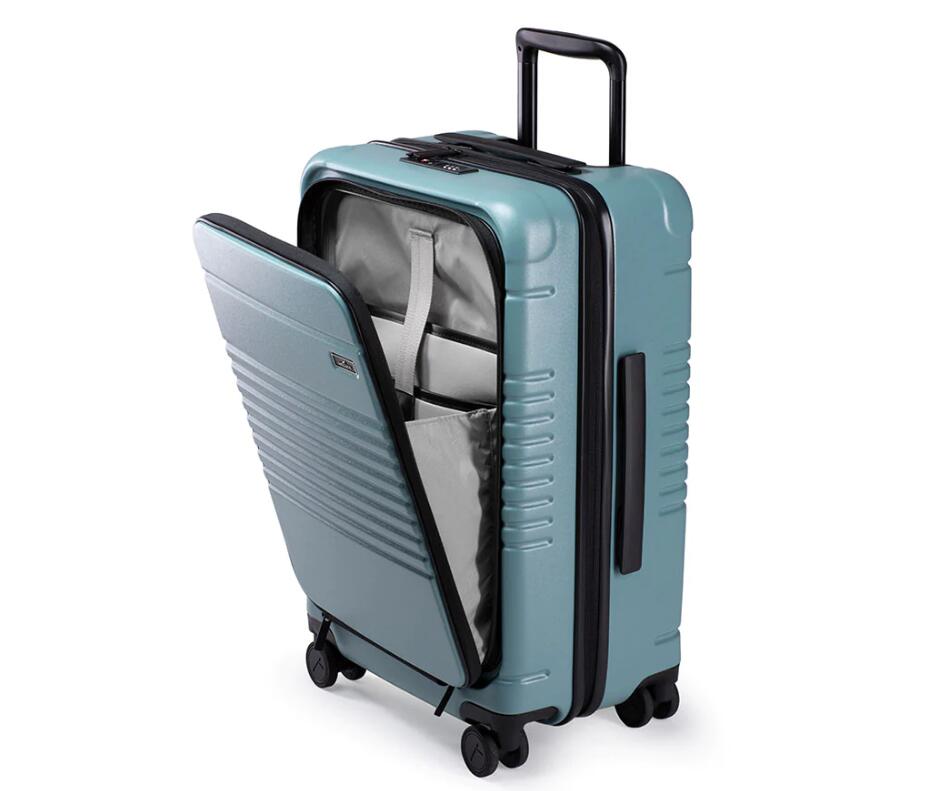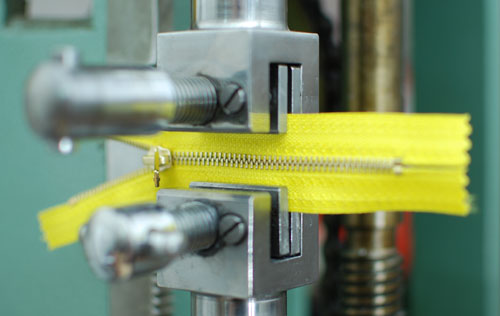- Qinsun Instruments Co., Ltd.
- Tell:+86-21-6780 0179
- Phone:+86-17740808215
- Address:No. 2578 Minhang District Gu Dai Road, Shanghai
- Contact:Mr. Li
- QQ:846490659
Luggage zipper reciprocating fatigue testing machine

Luggage zipper reciprocating fatigue testing machine is a kind of equipment specially used to test the durability and performance of luggage zipper. The following are some introductions and notes about Luggage zipper reciprocating fatigue testing machine.
1. Equipment overview:
Luggage zipper reciprocating fatigue testing machine mainly consists of the following parts:
- Host: Contains components such as motors, transmissions and control systems to provide reciprocating motion of the zipper.
- Clamp: used to clamp and fix the zipper sample to be tested.
- Counter: used to record the number of reciprocating zippers.
- Control Panel: Provides an interface for setting test parameters and monitoring test progress.

2. Test principle:
Luggage zipper reciprocating fatigue testing machine evaluates the durability and performance of zippers by simulating the reciprocating opening and closing movement of zippers during use. During the test, the zipper sample is clamped on the fixture, and then the zipper is reciprocated by the motion drive provided by the host. In the set test period, the opening and closing operation of the zipper is repeated until the set test times are reached.
3. Precautions:
When testing with the Luggage zipper reciprocating fatigue testing machine, you need to pay attention to the following aspects:
- Sample selection: select zipper samples that match the actual application scene for testing. Ensure that the quality and size of the samples meet the relevant standards or requirements. If there are specific testing requirements, such as zipper type, material, etc., corresponding samples need to be selected for testing.
- Test parameter setting: set appropriate test parameters according to needs, such as reciprocating times, reciprocating speed, load, etc. According to different industry standards, product requirements or application scenarios, ensure that the test parameters are consistent with the actual usage.
- Observation and recording: During the test, closely observe the opening and closing of the zipper, and pay attention to whether there is any abnormal noise, jamming or damage. Promptly log and report any observed issues for analysis and troubleshooting.
- Data recording and analysis: record the relevant data of each test, such as the number of reciprocations, time consumption, etc. Perform data analysis based on test results to evaluate the durability and performance of the zipper. Compare test data between different samples or different batches to determine product quality and performance differences.
- Regular maintenance and calibration: Luggage zipper reciprocating fatigue testing machine is regularly maintained and calibrated to ensure its proper operation and reliability. Regularly inspect and clean the equipment and ensure the proper functioning of the transmission, following the maintenance guidelines provided by the manufacturer.

- Safe operation: When using the Luggage zipper reciprocating fatigue testing machine, the operator should abide by the safe operation rules and precautions. Use necessary personal protective equipment and ensure safe performance of equipment. Avoid personnel touching the moving parts of the equipment to avoid injury.
4. Significance and application of the test:
By testing with Luggage zipper reciprocating fatigue testing machine, the durability and performance of zippers can be evaluated, helping manufacturers to improve product design and quality control. For example, in the bag manufacturing industry, the durability of zippers is high, and the test results can be used to verify whether the product can withstand long-term use to ensure product quality and performance.
In summary, the Luggage zipper reciprocating fatigue testing machine is an important device for evaluating the durability and performance of luggage zippers. Following precautions, setting test parameters accurately during testing, using appropriate samples for testing, and recording and analyzing test results in a timely manner can effectively improve product quality and performance, and ensure the accuracy and reliability of testing.





